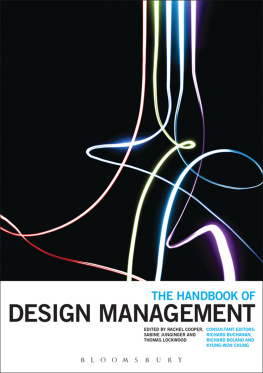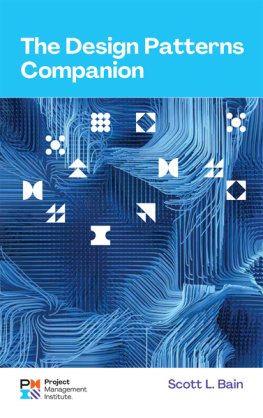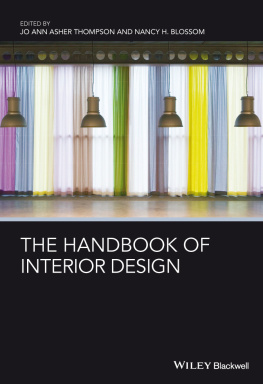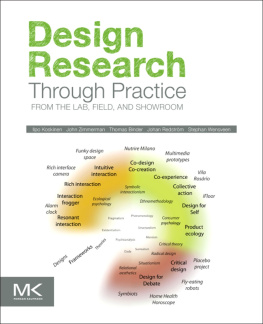The Handbook of Design Management
THE HANDBOOK OF DESIGN MANAGEMENT
Edited by
Rachel Cooper, Sabine Junginger
and Thomas Lockwood
with
Richard Buchanan, Richard Boland
and Kyung-won Chung

Bloomsbury Academic
An imprint of Bloomsbury Publishing Plc
50 Bedford Square
London
WC1B 3DP
UK | 1385 Broadway
New York
NY 10018
USA |
www.bloomsbury.com
English edition first published in 2011 by Berg
Reprinted by Bloomsbury Academic 2013
Rachel Cooper, Sabine Junginger and Thomas Lockwood 2011
Rachel Cooper, Sabine Junginger and Thomas Lockwood have asserted their right under the Copyright, Designs and Patents Act, 1988, to be identified as the Editors of this work.
All rights reserved. No part of this publication may be reproduced or transmitted in any form or by any means, electronic or mechanical, including photocopying, recording, or any information storage or retrieval system, without prior permission in writing from the publishers.
No responsibility for loss caused to any individual or organization acting on or refraining from action as a result of the material in this publication can be accepted by Bloomsbury or the author.
British Library Cataloguing-in-Publication Data
A catalogue record for this book is available from the British Library.
ISBN: 978-1-8478-8490-9
Library of Congress Cataloging-in-Publication Data
A catalog record for this book is available from the Library of Congress.
CONTENTS
Peter Gorb
Rachel Cooper and Sabine Junginger
Sabine Junginger and Rachel Cooper
L. Bruce Archer
Michael Farr
Peter Gorb and Angela Dumas
Sir Misha Black
Mark Oakley
Philip Kotler and G. Alexander Rath
James Pilditch
Sabine Junginger and Rachel Cooper
Anuja Agarwal, Uday Salunkhe and Surya Vanka
David Dunne
Ralph Bruder
Lucy Kimbell
Sabine Junginger and Rachel Cooper
Angela Meyer
Paolo Tombesi and Jennifer Whyte
W J. Hollins
Davide Ravasi and Ileana Stigliani
Thomas Lockwood
Kyung-won Chung and Yu-Jin Kim
Brigitte Borja de Mozota
Lisbeth Svengren Holm
Bettina von Stamm
Margaret Bruce
Tore Kristensen and Gorm Gabrielsen
David Hands
Alan Topalian
Frans Joziasse
Sabine Junginger and Rachel Cooper
Cai Jun
A. Georges, L. Romme and Gerard Endenburg
Ulla Johansson and Jill Woodilla
Sabine Junginger and Daniela Sangiorgi
Rachel Cooper, Martyn Evans and Alex Williams
Mike Press
Richard J. Boland, Jr.
Rachel Cooper and Sabine Junginger
FIGURES/ILLUSTRATIONS/DIAGRAMS
Touchpoints of brand experience.
TABLES
Anuja Agarwal, Associate Professor at We School, Mumbai, specializes in business design, innovation and interaction design. She is a postgraduate in computer applications and is currently pursuing her research in the area of creativity, design thinking and innovation in management education. She aims to bring design thinking and social sciences into mainstream management education in order to create the socially sensitive business leaders of tomorrow. Anuja spearheads a number of research projects on rural India, which incorporate understanding of economic and social needs to further analyse the opportunities for the various industry sectors to reach out to the grassroots and benefit the rural population.
Leonard Bruce Archer CBE (19222005) was a chartered mechanical engineer and later Professor of Design Research at the Royal College of Art, where he was made an Honorary Fellow upon his retirement in 1988. He helped found the Design Research Society in 1966, was appointed its first President from 1992 to 2000, and was presented with a Lifetime Achievement Award by the Society in 2004. He was also a Member of the Design Council from 1972 to 1980. He has been considered a champion of research in design and helped establish design as an academic discipline.
Sir Misha Black (191077) was an industrial designer, interior designer and architect. In 1933, he joined Charles and Henry Bassett and Milner Gray in forming the forerunner of the Industrial Design Partnership (later called the Industrial Design Unit) in London. This was one of the first multidisciplinary design consultancies in Britain. He later joined the Ministry of Information and was given the job of principal exhibitions designer. He also became involved in setting up a new design group, the Design Research Unit, in 1943. In 1959 he was appointed the first Professor of Industrial Design at the Royal College of Art, a highly influential role in design education that he held until retirement in 1975. Black was also a founder member and later president (195961) of the International Council of Societies of Industrial Design (ICSID), which first met in London in 1957; a Fellow of the Chartered Society of Designers, and winner of the Minerva Medal, the Societys highest award; and between 1974 and 1976 Black was President of the Design and Industries Association. He was knighted in 1972.
Richard Boland is the Elizabeth. M. and William. C. Treuhaft Professor of Management, Department Chair, and Professor of Information Systems at Case Western Reserve University, Ohio. He undertakes qualitative studies of individuals as they design and use information and is interested in how people make meaning as they interpret situations in an organization, or as they interpret data in a report. His primary focus is on how managers and consultants turn an ambiguous situation into a problem statement and declare a particular course of action to be rational. He has approached this in a variety of ways, including symbolic interaction, metaphor, cause mapping, frame shifting, language games and exegesis. He is a Senior Research Associate at the Judge School of Business at the University of Cambridge, as well as a Visiting Fellow at Sidney Sussex College.
Brigitte Borja de Mozota, a pioneer in design management, received her PhD in design management from Universit Panthon Sorbonne in 1985. She is an author of several books and participates in international research networks and journals. She is an expert for international industry bodies, including the European Office for the Harmonization of Internal Markets (OAMI), Design Management Europe, and the International Council of Societies of Industrial Design (ICSID). She is currently Director of Research at Parsons Paris School of Art and Design and a professor at Universit Paris Ouest. She teaches design management to MBA students at ESSEC and Audencia. She is a Design Management Institute Life Fellow.
Margaret Bruce is Professor of Design Management and Marketing at Manchester Business School, University of Manchester. She carries out research in design management, fashion and luxury marketing, social media and lifestyle consumption with current projects focused on consumption in a period of austerity and the implications for retailers and producers. Her interests in social media relate to the role of new media specialists in the design and communication process, brand loyalty and promotions using social media, and how young adults use social media. Best-selling books include
Next page










